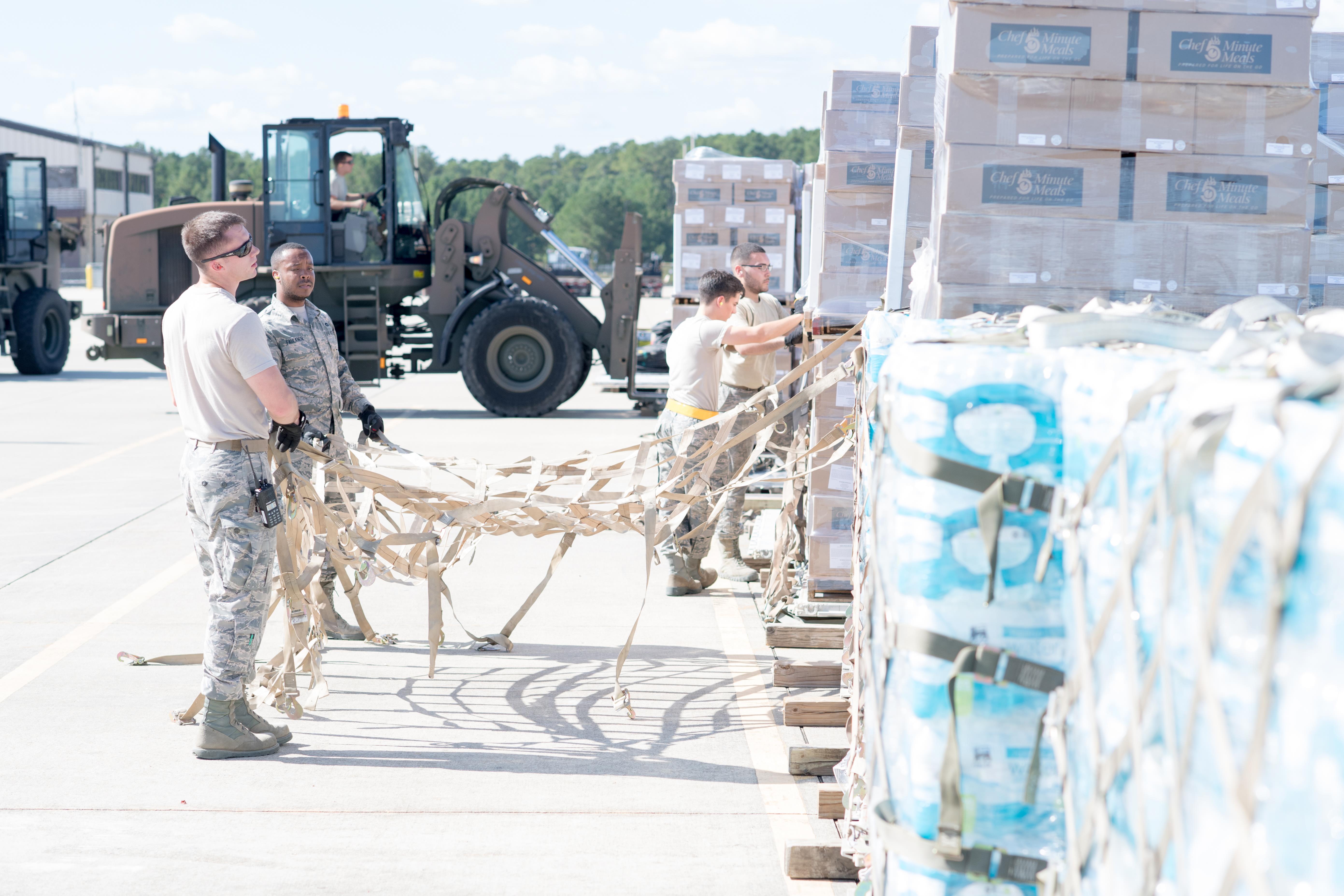Airmen in the 43d Air Mobility Squadron on Sept. 27 load pallets of water and food at Pope Army Airfield, N.C. The airmen also assisted in loading a 45,000-pound generator on a C-5M Super Galaxy headed for San Juan, Puerto Rico, following the strike of Hurricane Maria. The generator will be used to supply power for air traffic control operations in Puerto Rico, ensuring the steady flow of relief supplies. Air Force photo by Marc Barnes.
The Defense Department is ramping up its response operation in Puerto Rico to help the Federal Emergency Management Agency meet its resource distribution needs.
NORTHCOM is sending five Force Packages to the region. The first of the contingents, focused on command and control, already has landed in Puerto Rico. The second and third packages are sustainment and logistical units (some of which arrived Saturday). The fourth package is expected to deliver helicopters by Tuesday, and the fifth package will bring with it “more robust medical capacity,” according to a DOD update.
Army Lt. Gen. Jeffrey Buchanan, who’s running the federal response to the hurricane, has tasked the Army’s 3rd Expeditionary Sustainment Command and FEMA to develop “an area-wide concept of operations focused on sustainment and commodities distribution.” FEMA and DOD are constructing “facilities” throughout Puerto Rico for “aerial and seaport nodes of debarkation to flow resources throughout the island.”
Sunday, the Air National Guard’s 201st Airlift Squadron, based at JB Andrews, Md., provided 3,000 pounds of supplies to San Juan, Puerto Rico’s capital and largest city.
Puerto Rico ANG’s 156th Airlift Wing announced last week it had completed helping the Federal Aviation Administration in bringing air traffic flow back to normal at San Juan Luis Munoz Marin International Airport, the capital’s main airport.
A four-airman contingent of Maryland’s Civil Air Patrol recently headed out for the island, according to WBAL-TV.
“You prepare mentally for the absolute worst case scenario and any services that they do have you’ll be thankful for,” said Lt. Michael Heuss. “We will do damage assessment, we will do search and rescue as needed. It just depends on what the government’s needs at that time are.”
CAP is now close to breaking the flying hours record it broke last year. Due in large part to Air Force-assigned disaster relief missions in response to Hurricanes Harvey, Irma, and Maria, CAP has once again topped 100,000 flight hours so far this year, and is nearing last year’s record of 104,525 hours, which was the highest in the last five years.
Puerto Rico’s Governor Ricardo A. Rossello said in a press briefing Sunday that a slew of specific achievements in previous days—for example, a drop from a six- to seven-hour average delivery of gasoline to stations to two hours—are a result in “collaboration” between Puerto Rico, FEMA, and the Defense Department.
Other updates in the US territory:
- 59 of 69 hospitals are partially or fully operational.
- 11 percent of Puerto Rico has cell service
- 714 of 1,100 retail gas stations have reopened.
- 49 percent of grocery and big box stores are open
